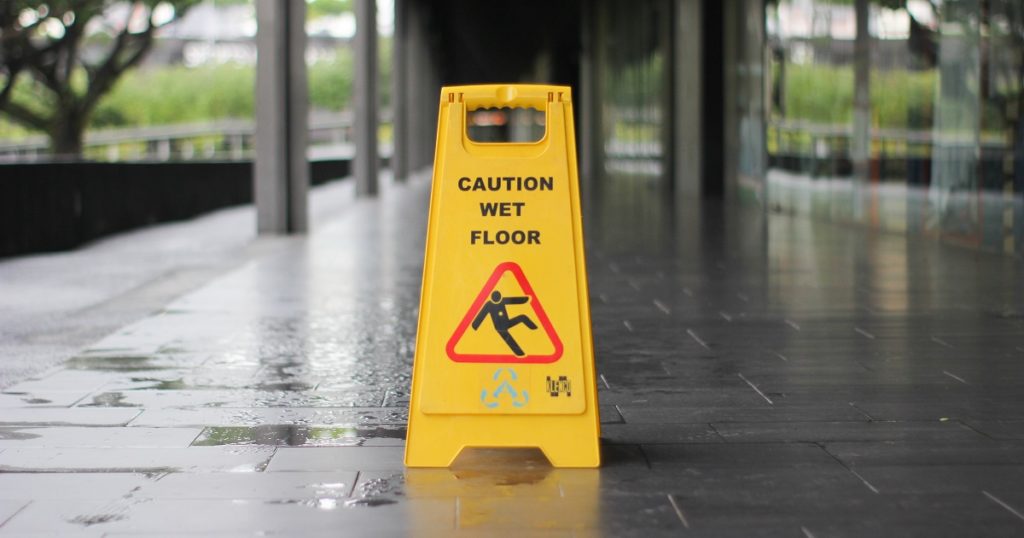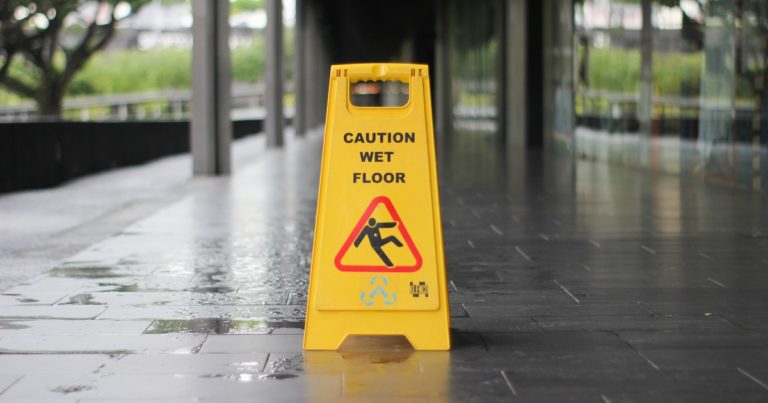Slippery floors can be a major hazard for anyone, from a toddler taking their first steps to an elderly person navigating the halls of their home. Slips and falls are one of the leading causes of injury and death, making it important to take steps to make sure that floors are safe.
If you’re concerned about the safety of your elderly loved one, there are several options available to you. To make your home more secure you could add handrails and other safety features. In addition, caregiver agencies play a vital role in making homes safer for the elderly by providing tailored support and assistance. They help identify and reduce hazards, such as removing clutter or installing safety features like non-slip mats, to prevent falls.
Knowing how to deal with slippery floors is key to preventing accidents and injuries. There are a few simple steps that can be taken to minimize the risk of slipping and falling. From using specialized flooring to using anti-slip mats, there are many ways to improve safety and prevent slips and falls.
In this article, you’ll find out more about how to deal with slippery floors and what measures can be taken to ensure safety.
Causes of Slippery Floors
Slippery floors can be caused by a wide variety of factors, so it is important to understand the source of the hazard in order to take measures to deal with it. Some of the most common causes of slippery floors include:
- Moisture: Moisture is a major cause of slips and falls. This can be due to spills, leaks, or flooding, as well as wet floors caused by weather or high humidity.
- Dust, debris, and grime: Dust, debris, and grime buildup can make floors extra slippery. Dust and debris can also pose a huge health risk, as it can lead to infections. Grout can also be a major contributor to floor slipperiness, particularly in bathrooms and kitchens.
- Specific flooring types: Certain flooring types can be particularly slippery, particularly if they are not properly maintained.
- Poor lighting: Poor lighting can make it challenging to see potential hazards, leading to increased risk of slips and falls.

Prevention Strategies
- Maintain good housekeeping: Poor housekeeping can be a major contributor to slippery floors. With proper cleaning and maintenance, it is easy to prevent the accumulation of dust and debris.
- Install anti-slip flooring: Certain flooring types may be particularly slippery. If there is concern about the safety of a floor, installing anti-slip flooring may be helpful. This can be particularly helpful for areas where there is high traffic, or for individuals who may be more susceptible to slips and falls.
- Use cane or walker alarms: Individuals who use canes or walkers may have difficulty detecting potentially slippery floors. Using cane or walker alarms can help to prevent falls caused by slippery floors.
- Use footwear with good traction: Footwear with good traction can help to prevent slips and falls. Particularly in areas with particularly slippery floors, footwear with grip can be a life-saving measure.
- Use floor mats: Floor mats can help to prevent water build up and can protect against slipping. They can be particularly helpful in areas subject to a lot of water, such as kitchens and bathrooms.
Flooring Options
Many different flooring types can be a source of concern when it comes to slippery floors. However, there are also many options for flooring that is specially designed to prevent slipperiness.
- Carpet: Carpet is a common flooring choice, particularly for living areas. It offers a degree of soundproofing, comfort, and warmth. However, it can be a cause for concern when it comes to floor slipperiness. It is important to ensure that carpet is properly maintained, by vacuuming regularly, in order to avoid it becoming too slippery.
- Hardwood floors: Hardwood floors can be a beautiful choice for home interiors. They are a durable, attractive option that can last for decades. However, they can also be a cause for concern when it comes to slipperiness. When installing hardwood floors, it is important to use a finish that provides anti-slip properties. Hardwood floors can also be installed with a non-slip underlay.
- Laminate floors: Laminate floors are a popular choice for interior design. They are durable, easy to maintain, and can be designed to match almost any home interior style. They offer many benefits over other flooring types, including durability, easy cleaning, and anti-slip properties.
- Vinyl floors: Vinyl floors can be a great choice for busy homes. They are easy to clean and durable, and can be designed to almost match any interior design style. There are a variety of different vinyl flooring types, including those designed to be anti-slip.
Anti-Slip Mats
Anti-slip mats can be a helpful way to prevent floor slipperiness. There are a number of different types of anti-slip mats, each providing a unique benefit.
- Squeegee mat: Squeegee mats are designed to help to prevent water build up. They can be very helpful in areas that are susceptible to water damage and build up, such as kitchens and bathrooms.
- Terry mat: Terry mats can be helpful for absorbing water and preventing cleaning chemicals from getting onto other surfaces.
- Gaffer mat: Gaffer mats are designed to provide a non-slip surface that can be used in a variety of settings. They can be helpful for preventing hazards, such as tripping over cords, and for marking off areas.
- Scuff mat: Scuff mats can be helpful for protecting flooring types, such as hardwood floors, that may be susceptible to damage from foot traffic.
Cleaning and Maintenance Tips
Proper cleaning and maintenance can help to prevent the buildup of dust and debris, which can be a major cause of floor slipperiness. Below are a few tips for keeping floors clean and dry to reduce the risk of slipping.
- Keep floors clean: Regularly sweeping and vacuuming floors can help to keep them clean and dry, reducing the risk of dust and debris buildup.
- Avoid spills: Keeping floors dry and clean can help to prevent spills. Spills can lead to slippery surfaces, particularly when they are not cleaned up in a prompt manner.
- Avoid blocking drains: Blocking drains can cause significant water damage, particularly in kitchens and bathrooms.
- Maintain humidity levels: Keeping humidity levels at a healthy level can help to reduce the risk of slippery floors caused by moisture build up.
Other Safety Measures
- Install handrails: Handrails can help to prevent slips and falls, particularly for seniors and individuals who may be more prone to falling. They can be particularly helpful in areas where there is a risk of falling, such as stairs.
- Keep pathways clear: Pathways should be kept clear from clutter and debris, as well as obstacles that can cause slips and falls. This can help to avoid accidents and injuries throughout the home.
- Use a flashlight: In areas that are particularly dark, a flashlight can be helpful for helping to avoid hazards such-as slippery floors.
Conclusion
Slippery floors can be a major risk for anyone, including children and the elderly, making it important to take steps to make sure that floors are safe. Knowing how to deal with slippery floors is key to preventing accidents and injuries. There are a few simple steps that can be taken to minimize the risk of slipping and falling. From using specialized flooring to using anti-slip mats, there are many ways to improve safety and prevent slips and falls. With these measures, it is easy to protect against dangerous and potentially fatal floor slipperiness.
